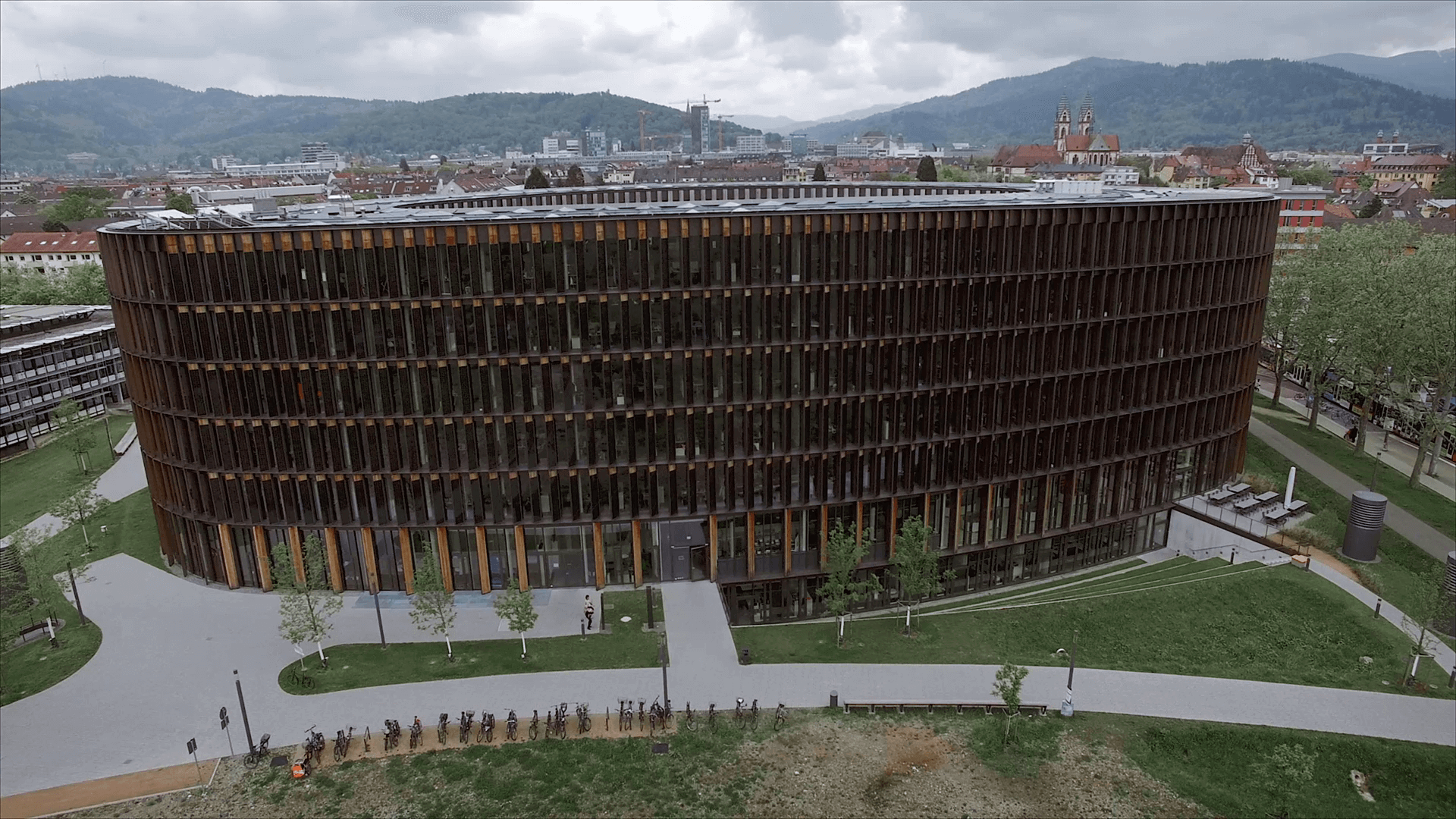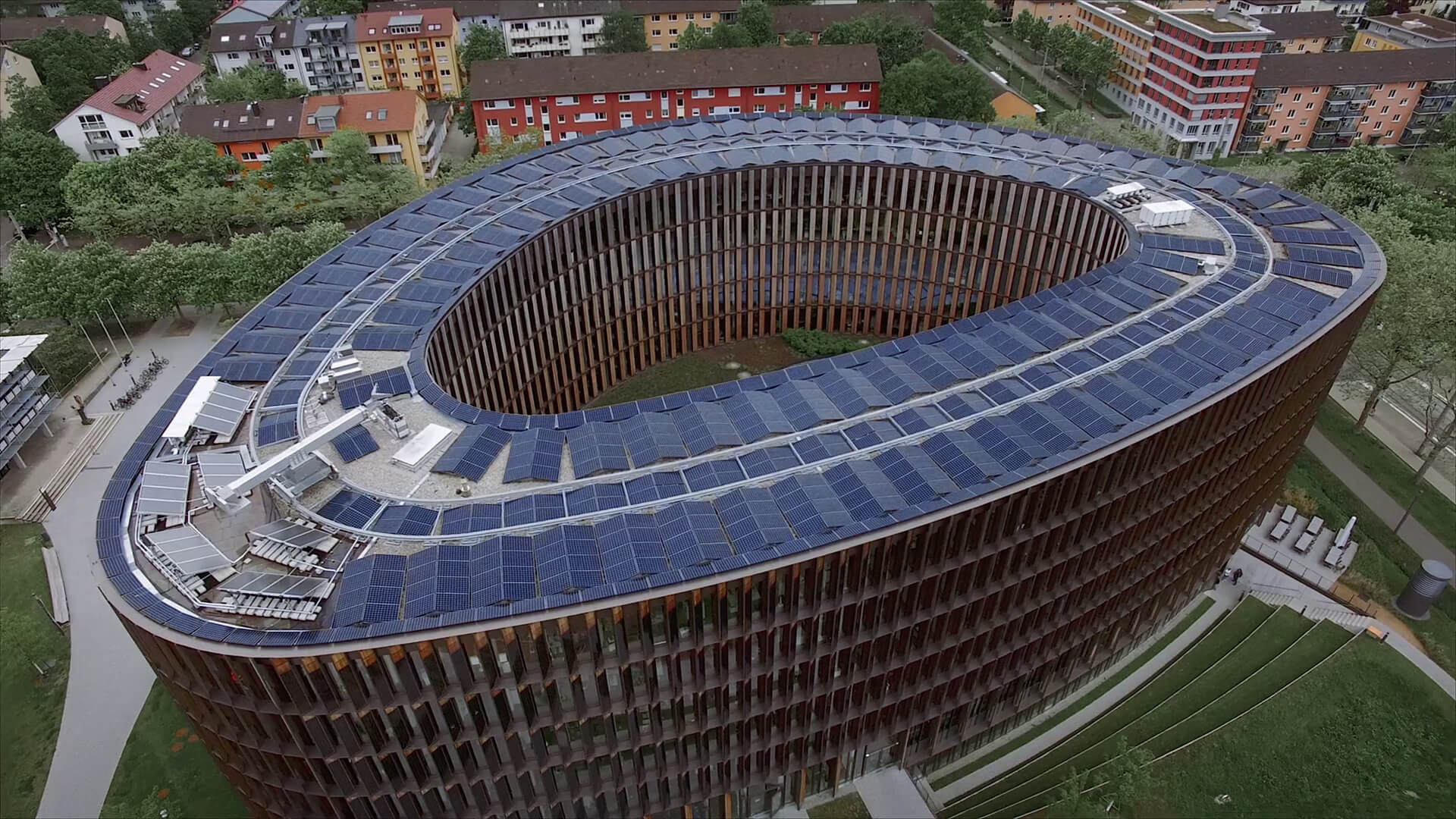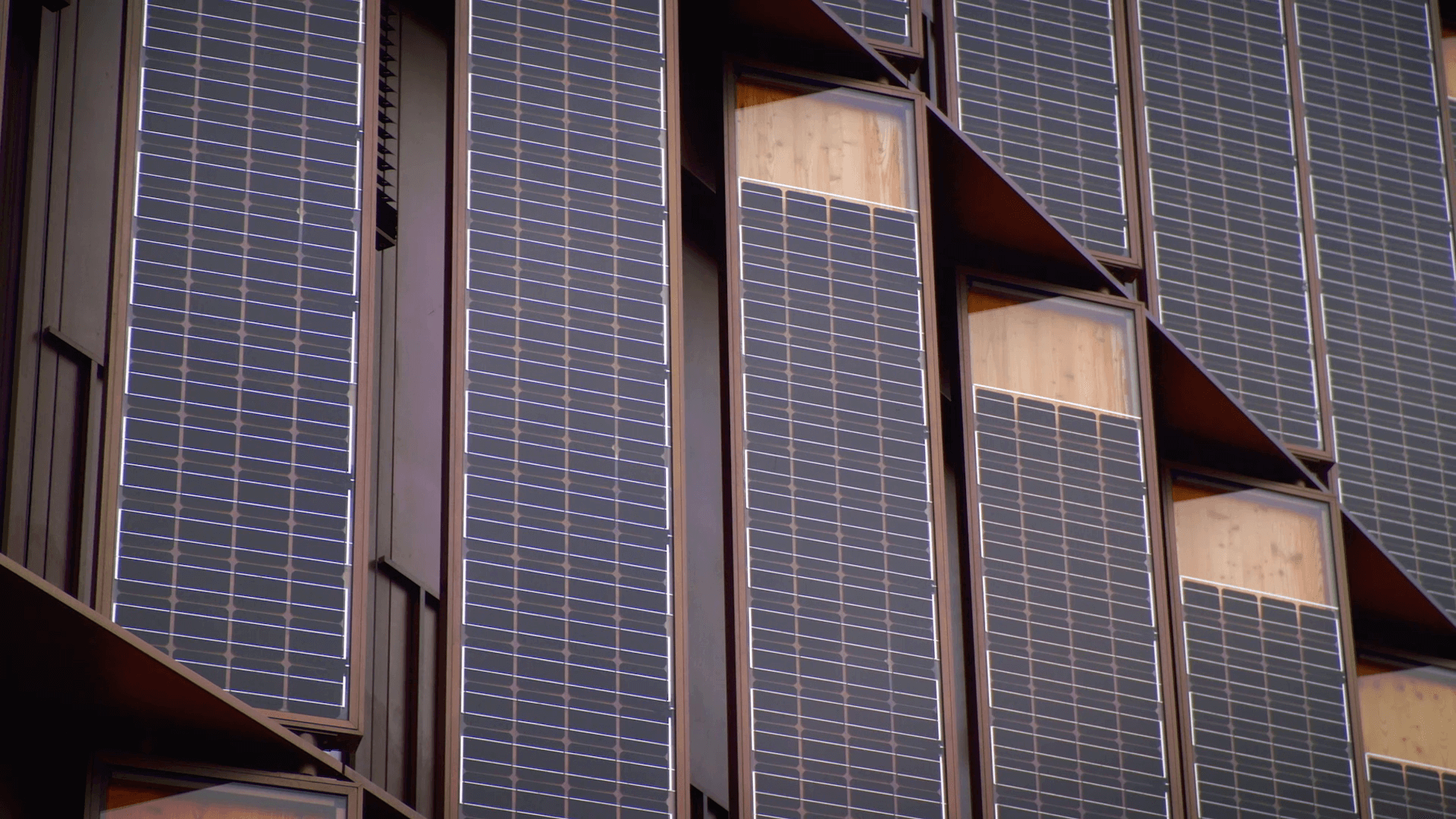| Duration: | August 2015 - December 2019 |
| Contracting Authority/ Sponsors: | German Federal Ministry for Economic Affairs and Energy (BMWi) through the Project Management Jülich PTJ |
| Project Partners: | City of Freiburg, Badenova |
| Project Focus: |
Net-Zero Energy Building, Freiburg’s New City Hall
Demonstration Building – City of Freiburg’s New Administrative Center is Housed in a Grid-Supportive, Net-Zero Energy Office Building



In 2018, Freiburg's "Rathaus im Stühlinger", the world's first public building (net floor space 22,650m2) with a zero-energy concept, was completed. This means that the building supplies more energy than it consumes per year, as determined in a yearly primary energy balance. The assessment limits for the annual energy balance are based on the energy demand requirements set down in the Energy Saving Ordnance (EnEV) for heating, ventilation, lighting and cooling. The user-dependent energy demand, e.g. equipment, IT and servers as well as the integrated day-care center and the cafeteria, is not considered in the balance. Completed in 2017 after three years of construction, the new city hall offers space for 840 employees and is the first of three buildings planned in the new administrative center (NVZ) of the City of Freiburg.
In order to achieve a balanced annual energy balance, the challenge is that the areas available for energy generation in the building are too small in relation to the effective area. For this reason, almost the entire building envelope of the city hall is used for energy generation. Photovoltaics are mainly used for this purpose. Hot drinking water is treated via hybrid collectors (PVT), which are supported by a gas condensing boiler. The heating is based on two ground-water coupled heat pumps, cooled by a ground-water heat exchanger. Heating and cooling are energy-efficient via surface systems. Ventilation systems with heat recovery form the ventilation concept.
The aim of the research project is to use and further develop tools for integral planning and success control. The dynamic load profiles of demand and supply are to be optimized during operation. In addition to operational monitoring, concepts for grid-supportive operation are also being developed.
The balance of the first full operating year 2018 by Fraunhofer ISE shows that the plus energy target has almost been achieved. However, if the deficits and optimization potentials identified in the monitoring are eliminated or tapped in the operation of the technical building systems, it can be assumed that the target can be achieved. After the first year of operation, the building operation will continue to be scientifically monitored in order to be able to assess the long-term performance and resilience of the concept.